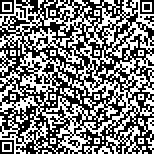| Quote
: |
曾朋,陆小龙,徐无忌,向黎黎,李汪洋,熊辉.桃红四物汤诱导间充质干细胞动员促进骨折修复的机制[J].湖南中医药大学学报英文版,2023,43(12):2163-2170.[Click to copy
] |
|
| |
|
|
| This paper
:Browser 1123times Download 812times |
| 桃红四物汤诱导间充质干细胞动员促进骨折修复的机制 |
| 曾朋,陆小龙,徐无忌,向黎黎,李汪洋,熊辉 |
| (湖南中医药大学第二附属医院, 湖南 长沙 410007;湖南中医药大学, 湖南 长沙 410208) |
| 摘要: |
| 目的 探讨桃红四物汤(Taohong Siwu Decoction,THSWD)在骨折早期对骨髓间充质干细胞(mesenchymal stem cell,MSC)动员的影响。方法 将24只SPF级雄性SD大鼠随机分为正常组、骨折组及药物组,每组8只。除正常组外,其余两组大鼠予右侧股骨干开放性骨折术造模。造模成功术后第1天,药物组大鼠予20 g/(kg·d)THSWD灌胃,正常组与骨折组的大鼠予等量蒸馏水。早、晚各1次,连续灌胃5 d。采用流式细胞术检测外周血CD45-CD90+CD29+单核细胞数目;通过流式细胞术进行表面标志物鉴定,镜下观察细胞形态,茜素红染色法、油红O染色法分别观察细胞成骨、成脂分化,以此鉴定外周血MSC来源;蛋白芯片检测骨折早期细胞因子的表达。结果 与正常组比较,骨折组大鼠外周血MSC绝对细胞数目、相对细胞数目增高(P<0.05),药物组外周血MSC绝对细胞数目、相对细胞数目显著增高(P<0.01);与骨折组比较,药物组大鼠外周血MSC绝对细胞数目、相对细胞数目增高(P<0.05)。通过流式细胞术分析发现:THSWD干预大鼠骨髓来源的细胞中CD45-、CD90+、CD29+比例和CD45-中CD90+CD29+细胞比例分别为90.94%、98.57%、92.27%和94.15%;而THSWD干预的外周血来源的细胞CD45-、CD90+、CD29+比例和CD45-中CD90+CD29+细胞比例分别为90.59%、98.21%、92.03%和93.52%。通过镜下观察细胞形态,外周血MSC较骨髓MSC生长周期明显延长,细胞克隆数明显减少;细胞形态基本无明显区别;经过成骨成脂诱导后,茜素红和油红O染色发现,外周血MSC和骨髓MSC都能向成骨、成脂肪方向分化。与正常组比较,骨折组外周血中性粒细胞趋化因子-1(cytokine-induced neutrophil chemoattractant-1,CINC-1)和巨噬细胞炎性蛋白-1α(macrophage inflammatory protein-1α,MIP-1α)蛋白表达增高(P<0.05);与骨折组比较,药物组外周血CINC-1、CX3C趋化因子(fractalkine,FKN)、L-选择素(L-selectin)、血管内皮生长因子(vascular endothelial growth factor,VEGF)蛋白表达增高(P<0.05),白细胞介素-1α(interleukin-1α,IL-1α)蛋白表达降低(P<0.05)。结论 活血化瘀法的代表方THSWD干预骨折早期的大鼠能明显促进骨髓内MSC的动员,其分子机制可能与外周血CINC-1、FKN、L-Selectin、VEGF上调、IL-1α下调有关。 |
| 关键词: 桃红四物汤 骨折 骨折修复 间充质干细胞 动员 |
| DOI:10.3969/j.issn.1674-070X.2023.12.004 |
| Received:May 25, 2023 |
| 基金项目:国家自然科学基金面上项目(81874478);湖南省中医药管理局一般项目(2022-04033025);湖南省教育厅青年项目(22B0369)。 |
|
| Mechanism of Taohong Siwu Decoction inducing mesenchymal stem cell mobilization to promote fracture repair |
| ZENG Peng,LU Xiaolong,XU Wuji,XIANG Lili,LI Wangyang,XIONG Hui |
| (The Second Hospital of Hunan University of Chinese Medicine, Changsha, Hunan 410007, China;Hunan University of Chinese Medicine, Changsha, Hunan 410208, China) |
| Abstract: |
| Objective To study the effect of Taohong Siwu Decoction(THSWD) on bone marrow mesenchymal stem cell mobilization in rats with early fracture.Methods A total of 24 SPF male SD rats were randomly assigned into normal, fracture, and drug groups respectively, with eight rats in each group. Except for the normal group, the other groups received the surgery of a right femoral shaft fracture. On the first day after the operation, the drug group was given 20 g/kg of THSWD for intragastric administration, while the normal group and the fracture group were given the same amount of distilled water. All rats were administered intragastrically in the morning and evening for five days. The number of CD45-CD90+CD29+ monocytes in peripheral blood was determined by flow cytometry. The surface markers were identified also by flow cytometry, cell morphology was observed under an inverted microscope, osteogenic and adipogenic differentiation were observed by alizarin red staining and oil red O staining, respectively, to identify the origin of peripheral blood MSCs. The expression of cytokines in the early stage of fracture was detected by protein chips.Results The number of CD45-CD90+CD29+ monocytes in peripheral blood in fracture rats was significantly higher than that of normal rats(P<0.05). The number of MSCs n peripheral blood was further elevated in the durg group(P<0.01). Compared with the fracture group, the number of MSCs in peripheral blood of drug group increased(P<0.05). Flow cytometry analysis revealed that the proportions of CD45-, CD90+, CD29+ cells and CD45-CD90+CD29+ cells in bone marrow-derived cells of THSWD-interfered rats were 90.94%, 98.57%, 92.27%, and 94.15%. The proportions of CD45-, CD90+, CD29+ cells, and CD45-CD90+CD29+cells in peripheral blood-derived cells of THSWD-interfered rats were 90.59%, 98.21%, 92.03%, and 93.52%. By obs erving the cell morphology under the microscope, it was found that peripheral blood MSCs had a significantly longer growth cycle and a significantly reduced number of cell clones compared with bone marrow MSCs. There is no significant difference in cell morphology; after the induction of osteogenic and adipogenic differentiation, alizarin red and oil red O staining revealed that both peripheral blood MSCs and bone marrow MSCs could turn towards osteogenic and adipogenic differentiation. Compared with the normal group, the expressions of cytokine-induced neutrophil chemoattractant-1(CINC-1) and macrophage inflammatory protein-1α(MIP-1α) were higher in the peripheral blood in the fracture group(P<0.05). Compared with the fracture group, the expressions of CINC-1, fractalkine(FKN), L-selectin, vascular endothelial growth factor(VEGF) proteins increased(P<0.05), and the expression of interleukin-1α(IL-1α) protein decreased(P<0.05) in peripheral blood of drug group.Conclusion Early intervention of THSWD, the representative formula to promote blood circulation and remove blood stasis, can signific antly induce the mobilization of bone marrow MSCs in rats, and its molecular mechanism may be related to the up-regulation of CINC-1, FKN, L-selectin, and VEGF, and the down-regulation of IL-1 in peripheral blood. |
| Key words: Taohong Siwu Decoction fracture fracture repair mesenchymal stem cells mobilization |
|

二维码(扫一下试试看!) |
|
|
|
|


